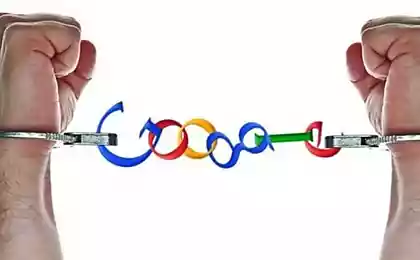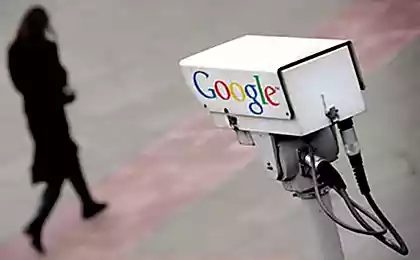177
Have you already received your inventory number from Google?
I already got it. I was surprised to find it on my phone today. And I have to admit: very clever and conveniently invented. No, I knew that “Google’s business model is espionage,” but I didn’t think it was that cynical.
The paranoids scared us that soon RFID chips would be sewn under the skin for inventory and control purposes. That thought has always seemed doubtful to me. Why? It probably hurts – people will start complaining, indignant, chips will be forged. . .
Google specialists decided to go another way and absolutely brilliantly came up with the idea of embedding the chip not in the slave himself, but in his most expensive toy, which he bought for his money, almost never parted and certainly does not intend to throw away. In addition, which RFID chip can be compared in its control capabilities with smartphones: one camera on one side, the other on the other, a microphone, GPS, in some smartphones already fingerprint scanners are embedded. Just in case, the analogue of RFID tags - NFC - was sawed down.
Settings → accounts → Google → Advertising
As can be understood from the explanation, a profile was opened for each ram and the interests of the user were “stitched to the case”. Interests dossier called only in order not to injure the vulnerable psyche of the happy owner of the gadget — he did not give half of the salary to collect dossier on it: from voice samples to travel routes.
At first glance, it may seem that the discreet distribution of inventory numbers is something not very decent. But it's not. There are no losers and all parties are happy. Judge for yourself:
And although assigning an inventory number to the user seems a little humiliating, in return the user gets much more: the ability to throw birds at Angry Birds for free, take pictures of food on Instagram and have fun in 1001 ways. Isn't it worth it? published
P.S. And remember, just changing our consumption – together we change the world!
Source: liberatum.ru/blog/identifikatsiya-baranov
The paranoids scared us that soon RFID chips would be sewn under the skin for inventory and control purposes. That thought has always seemed doubtful to me. Why? It probably hurts – people will start complaining, indignant, chips will be forged. . .
Google specialists decided to go another way and absolutely brilliantly came up with the idea of embedding the chip not in the slave himself, but in his most expensive toy, which he bought for his money, almost never parted and certainly does not intend to throw away. In addition, which RFID chip can be compared in its control capabilities with smartphones: one camera on one side, the other on the other, a microphone, GPS, in some smartphones already fingerprint scanners are embedded. Just in case, the analogue of RFID tags - NFC - was sawed down.
Settings → accounts → Google → Advertising
As can be understood from the explanation, a profile was opened for each ram and the interests of the user were “stitched to the case”. Interests dossier called only in order not to injure the vulnerable psyche of the happy owner of the gadget — he did not give half of the salary to collect dossier on it: from voice samples to travel routes.
At first glance, it may seem that the discreet distribution of inventory numbers is something not very decent. But it's not. There are no losers and all parties are happy. Judge for yourself:
- Google gets the ability to monetize each ram taken into account;
- The security services are also very pleased;
- But the most satisfied with the "cooperation" users themselves, who got the opportunity for free, as they (we) seem to take software.
And although assigning an inventory number to the user seems a little humiliating, in return the user gets much more: the ability to throw birds at Angry Birds for free, take pictures of food on Instagram and have fun in 1001 ways. Isn't it worth it? published
P.S. And remember, just changing our consumption – together we change the world!
Source: liberatum.ru/blog/identifikatsiya-baranov























